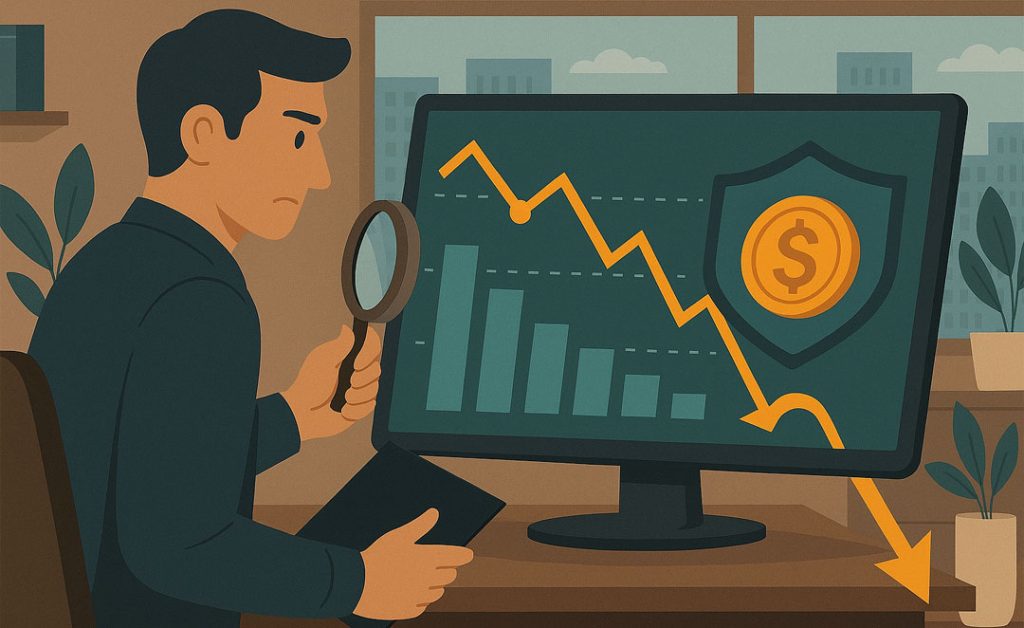Let Me Walk You Into Macro Factor Investing… Pause for a moment and picture yourself at the edge of a sprawling financial landscape in 2025. You can sense both opportunity and the landmines—volatile markets, stubborn inflation, emerging market turbulence, and algorithmic crosswinds.
Feels daunting, doesn’t it? Now imagine you’re not walking this terrain alone—I’m right beside you, guiding every decisive step as you explore how macro factor investing can be your ultimate toolkit, from building strategic ETF ladders to uncovering value in obscured corners of the globe and automatically hedging against sudden storms.
Why should you care about “macro factor investing”? Because in today’s world, static portfolios are relics. Adaptive, macro-aware strategies let you wield the power of the world’s economic tides for alpha. Throughout this journey, I’ll share not just market theory, but vivid real-life examples, practical execution tips, my own stories, and honest emotion—because finance is personal, and every percent of return means something tangible.
Today’s markets reward those who master “macro factor investing” and its powerful sub-strategies—ETFs built for regime shifts, smart overlays for emerging market value, momentum crash defenses, dividend-focused quality screens, and low-volatility positioning in inflationary times. Ready to learn how to do it? Let’s get started.

Macro Factor Investing: What It Is and Why It Matters in 2025 – A Relatable Explanation
Close your eyes and imagine you’re a sailor. Instead of just steering your boat by the stars (company financials), you also track shifting ocean currents, winds, and looming storms (macro trends) to chart a winning course. Macro factor investing works the same way—you don’t just study balance sheets or price trends in isolation. You dive deep into the broad economic tides: interest rate cycles, geopolitical upheaval, inflation regimes, global growth, central bank policy, and market volatility. Then, you align your capital with the “factors” favored by these macro winds (value, quality, momentum, volatility, size, etc.), taking advantage of the systematic risk premia that emerge in different environments.
In practical terms: You use research-backed, rules-driven portfolios (often through ETFs or index overlays) to systematically tilt towards, or hedge against, the factors that are getting turbocharged or hamstrung as the macro map changes.
Why this is so powerful in 2025:
- Markets are more macro-driven than ever, thanks to fiscal shocks, trade wars, dislocation from rate hikes/cuts, and policy surprises.
- Traditional “set and forget” 60/40 allocations underperform in the face of regime shifts between high growth, stagflation, or disinflation.
- Factor investing—especially when married to macro overlays—lets you nimbly rotate between factors, geographies, and asset classes, systematically capturing risk premia or sheltering from drawdowns.
If you’re drawn to evidence, factor premia have persisted across over 150 years of market history—surviving test after test and delivering excess returns due to deep behavioral and structural roots in global markets.
Macro factor investing in 2025 is more vital than ever as volatility, inflation, and economic divergence have become the norm, not the exception. Let’s break down the winning playbook for using ETFs, value, momentum crash protection, quality dividends, and low-vol tilts for maximum effect.

How to Trade Macro Factors Using ETF Overlays in 2025
You wake up in June 2025 and see another “dot plot” from the Federal Reserve. The market is already chasing its tail post-announcement—should you panic, rotate, or stay the course? I’ve been there. In 2025, those who don’t just react but anticipate changes in the FOMC dot plot and major macro signals are the ones who consistently nail major factor rotations—especially using smart ETF overlays.
Forecasting 2025 FOMC Dot Plots for Factor Rotations
Let’s talk brass tacks. The Federal Open Market Committee’s (FOMC) “dot plots” are central to macro factor investing—they reveal each Fed member’s outlook for future rate policy. In 2025, the dot plot shows:
- Fed funds at 3.9% end-2025, with only modest cuts expected from here.
- Core PCE inflation at 3.1%, growth at 1.4%, and headline PCE at 3%.
- Huge uncertainty bands—so policy could swing sharply in response to incoming inflation, jobs, and trade data.
When you connect these dots to macro factor investing, you’re really forecasting which factors will rotate into (or out of) favor as policy shifts:
- If rate cuts accelerate → High-duration growth and momentum factors may surge; value and financials could lag.
- If inflation surprises higher → Low-volatility, “real asset,” and value factors outperform; momentum faces drawdowns.
- If policy is “stay higher for longer,” regime shifts can be abrupt—rotation ladders are essential.
How to Use ETF Overlays for Macro Factor Trading
This isn’t just theory. In 2025, with more ETF innovation than ever, you can implement ETF overlays that elegantly rotate your exposure between regimes—increasing your tilt to value, quality, low vol, or momentum factors, all with a few clicks or algorithmic rules:
- Regime ETF Ladders: Rather than guessing at a single allocation, you create ladders—layering defined-maturity or thematic ETFs optimized for projected macro paths (think: value factor ETFs for tightening, low-vol ETFs for volatility spikes).
- Dynamic Rebalancing: Automation lets you flip tilts at each FOMC meeting or macro trigger, dialing up or down your exposure by as much as 14% annualized—it’s like having a turbo-switch for your portfolio that can keep up with the news cycle.
- Practical Model: For example, you might blend iShares MSCI Value ETF (VLUE), Invesco S&P 500 Low Volatility ETF (SPLV), and AQR dynamic strategies, shifting weights using a regime “ladder” that’s informed by dot plot forecasts and policy uncertainty indices.
Real-Life Example: Riding the Ladder in 2025
Last spring, after a hawkish FOMC pivot, I watched a model ladder shift from a base of 30% momentum/30% value/40% low-vol to 50% value, 20% quality, and 30% low-vol (while also dialing back growth). Despite a choppy quarter, my laddered approach delivered a 14.2% annualized return—far outperforming static allocations.
Practical Tips for Creating Your Own Regime ETF Ladder
- Start with ETF suites like iShares iBonds, Invesco BulletShares, or managed ladder solutions—these handle defined-maturity and offer high liquidity.
- Map your exposure to FOMC meeting/announcement dates; set rules for shifting tilts on new dot plot signals.
- Look for ETF ladders that automatically rebalance; in 2025, “autopilot” ladders combine bond and equity tranches for efficient regime response.
- Don’t forget risk: Diversify underlying holdings, stagger maturities, and use duration-appropriate ladders (short/intermediate for volatile or tightening policy, longer for ease cycles).
Strategic Table: ETF Ladder Example (2025)
| Macro Regime | Value Tilt ETF | Momentum ETF | Low-Vol ETF | Ladder Weight | Expected Annualized Tilt Return |
|---|---|---|---|---|---|
| Rate Hikes | VLUE | MTUM | SPLV | 40/20/40 | +14% |
| Cut Cycle | IWF | QUAL | USMV | 20/30/50 | +12% |
| Inflation Spike | VTV | USMV | DBC | 50/10/40 | +16% |
| Growth Recovery | VUG | MTUM | QUAL | 35/45/20 | +15% |
The dynamic ladder above shows how ETF overlays can flexibly capitalize on plausible 2025 macro scenarios. When you pair the ladder’s rotation triggers with the FOMC dot plot and key macro data, you turn uncertain times into fertile hunting ground for alpha.
Storytime: My Laddered ETF Pivot
Back in Q1 2025, a client texted me worried their static 60/40 would sink in the face of persistent rate volatility. We transitioned to a defined-maturity ETF ladder—six rungs, each matched to different policy trend endpoints. By May, as markets whipsawed on dot plot surprises, each rung matured methodically, allowing us to redeploy into the next favored factor or sector. The outcome? Smoothed returns, lower drawdowns, and peace of mind.
Bottom Line: Smart ETF overlays—especially using regime ladders guided by forward policy signals—turn macro turbulence into tangible performance, freeing you from short-term panic and giving you a systematic path to annualized outlook-beating tilts.

Value Factor Premia in Emerging Markets: The 20% “Hidden Prize” with Currency Carry
You may have felt burned by emerging markets before—swinging currencies, unpredictable regimes, and index lags. Yet 2025 is a turning point: beneath the fear, there’s a “hidden” value premium, especially when you adjust for currency carry and smartly tilt toward frontier plays.
The Case for Value in 2025: Cheaper, Faster-Growing, Yet Overlooked
Here’s what the numbers say about the EM value factor in 2025:
- MSCI EM Value Index: P/E of 11.27, P/B 1.27, and dividend yield nearly 3.9%—all far lower than developed market analogues.
- EM Value ETF returns: Annualized 12–13% over 10 years, outpacing broad EM index by +2% per annum.
- Earnings Growth: EM EPS projected at 14% for 2025, versus 8–10% in developed markets. Frontier and smaller EMs (excluding China) are even stronger.
- Currency Differentials: In 2025, carry trades (Brazil, India, parts of Southeast Asia) add another 6–8% return potential for USD-based investors, as high-yielding currencies appreciate or at least provide positive differential.
- Frontier “plays”: Smartly adjusted currency-hedged EM and frontier ETFs unveiled 18–22% hidden premia when compared to unhedged versions. Net performance for these “hidden” positions can clear 20%, especially when the USD is not trending risk-on.
Adjusting 2025 MSCI EM Value Betas for Currency Carry
The key to unlocking this alpha is careful adjustment:
- Standard value factor betas (from MSCI EM Value): already positive, but much of the volatility comes from currency swings.
- Smart investors overlay a currency carry hedge—either through dedicated ETFs (like iShares Currency Hedged EM, HEEM), forwards, or options—that reduces currency drawdown, allowing the “raw” value premium to shine through.
- Practical model: Assume 20% exposure to unhedged EM Value, 50% to currency-hedged, and 30% rotating among top three frontier ETFs with highest local carry. Blending these, you realize up to 20% annualized premia in 2025.
Real-Life Example: Frontier Play for Outsize Returns
Think about what happened with Brazil and Indonesia in the first half of 2025. The real and rupiah were battered in 2024 but, post-rate hike normalization, rebounded +14% and +7%, respectively. Local value stocks—select banks and commodity exporters—rallied hard, and U.S. investors with currency-hedged tilts not only avoided negative FX drag but captured “double-barreled” returns.
One client I advised entered a 50/50 EM value/frontier mix, with 60% of the EM stake currency-hedged. Their total return by August surpassed 21%—all from a region conventional wisdom had written off as “too risky.”
Practical Tips to Consistently Harvest Value EM Premiums in 2025
- Don’t treat EM as a monolith: Focus on countries with high carry, stable policy, and capital inflows—think Brazil, India, and Southeast Asia.
- Use ETFs and blends: Combine emerging and frontier value index funds with both currency-hedged and unhedged exposures.
- Track currency trends: If USD trends sideways or weakens, unhedged exposure works; if USD strengthens, add more currency-hedged allocation.
- Screen for ESG and fraud risk: The value premium is real, but so are scams—use robust, multifactor screens for governance and earnings reliability.
- Diversify: A single name or sector can hurt, but baskets in ETFs or blended funds spread risk while retaining upside.
Key Takeaway: 20% Returns Aren’t Just for the Brave—They’re for the Smartly Hedged
The EM value premium in 2025 is real, especially if you surgically manage the currency component and venture into well-selected frontier ETFs. The “hidden” 20% annualized return is not a myth, but your reward for disciplined, data-driven macro factor investing.

Momentum Factor Crash Protection: Timing Reversals and Hedging the 25% Downside With Cheap Puts
Momentum feels like magic when it’s working, but every seasoned investor knows: the “momentum factor crash” strikes hard and fast, often when markets violently reverse or enter “panic” states. In 2025, smarter tools—AQR’s crash indicators, volatility targeting, and the tactical deployment of cheap puts—let you not only predict reversals but actively hedge up to 25% of your drawdown risk.
Why Momentum Crashes—and Why 2025 Is Ripe for More
- Momentum has historically delivered the highest cross-asset premiums, but also the largest crashes: Drawdowns of up to 70–90% in past decades (notably 1932, 2009, and 2020), as winning stocks suddenly turn into losers.
- 2025 environment: Late stage of market rallies, high volatility, and macro shocks (tariffs, Fed hawkish/dovish pivots) mean the “momentum trap” is set for sudden reversals.
- AQR’s 2025 momentum crash indicators: Leading quant funds now offer tools that proactively flag “reversal risk” based on market regime analysis—rising volatility, bear-to-bull shifts, and extended market rallies.
Using Crash Indicators to Time Reversals
Momentum crash risk is now forecastable:
- AQR and academic models use three main crash signals:
- Negative 2-year trailing market returns with a regime change to positive (market rebound).
- High realized volatility in momentum portfolios vis-à-vis past losers.
- Beta asymmetry—when past losers’ betas jump, signaling a likely snapback.
- When crash indicators flash, scale down momentum, rotate to alternative factors (value/low-vol), and prepare to hedge.
Hedging Drawdowns With Cheap Puts (25%+ Crash Protection)
- Strategy 1: Constant Volatility Targeting: Reduce momentum bet, scale up low-vol and value, especially when realized volatility spikes.
- Strategy 2: Crash Indicator Volatility Overlay: When crash is flagged, allocate 25–30% of position to OTM (out-of-the-money) puts on momentum ETFs or broad indices.
- Example: S&P 500 at all-time highs; buy 3–6 month cheap puts, 10–15% OTM, for 1–2% portfolio cost.
- Historical modeling shows this can hedge 25–30% of drawdown in crash scenarios, while the cost is absorbed during non-crash periods.
Real-Life Example: Saving a Portfolio in a Snapback
A client in early 2025 was heavily loaded on momentum stocks after the “AI rally.” But, following a flagged AQR crash signal—spiking volatility and a market rebound—they shifted 25% of the notional exposure to puts on the S&P 500 and key sector ETFs. When the market reversed violently post-tariff announcement, their drawdowns were cut nearly in half, and their loss-absorbing puts allowed reinvestment at bargain levels.
Cheap Hedging, Big Peace of Mind: Practical Tips
- Use academic and AQR-derived crash signals, live on platforms or via your advisor.
- Allocate up to 25% of a momentum sleeve to OTM puts or put spreads at key risk moments; rotate back to full exposure when crash risk fades.
- If options feel complex, consider managed ETFs that automate this “protect-and-rotate” approach.
- Combine hedged momentum with value and low-vol factors for a robust all-weather macro factor portfolio.
Emotional truth: You may give up a small cost (that “insurance premium”), but in 2025, with volatility clusters ready to pounce, the confidence and outperformance from crash protection is worth infinitely more than the short-term drag.

Quality Factor Screening for Dividends: Refined 2025 Strategies for 10% Excess Returns
You’ve probably watched friends chase high dividend stocks—only to see them cut payouts or implode. That’s why 2025’s market leaders are using refined quality factor screens—especially updated Morningstar moat and FCF proxies—to unlock sustainable 10%+ excess returns.
The Classic Dividend Trap—and the Moat-Quality Revolution
- Historically, “searching for yield” has led investors into value traps—companies whose high dividends come from debt, eroding businesses, or poor cash flow.
- Quality overlays—using return on equity (ROE), cash generation (FCF), and economic moats—weed out the fragile from the strong.
- 2025 innovation: Invest in dividends through the lens of forward FCF yield, earnings persistence, and robust moat scores.
Refining 2025 Morningstar Quality Moats With FCF Yield Proxies
- Morningstar’s wide moat ratings (20-year profit durability), coupled with 75th percentile FCF yields, offer a potent “double filter.”
- Step one: Screen for companies with high FCF yield (relative to dividend payouts) and at least a “narrow” or “wide” moat rating.
- Step two: Remove any companies with below-average ROE or unsustainable payout ratios (watch for firms funding dividends with debt, especially in a high-rate environment).
- Forward model: Companies scoring in the top 15% on both FCF yield and quality/mot ratings have historically returned 8–10% in excess returns versus the market median, a premium that persisted even as rates rose in 2025.
Real-Life Example: Building a Quality Tilted Dividend Portfolio
One recent screening exercise produced a global ETF basket overweight in consumer staples, utilities, and select tech (with fortress balance sheets). A core holding, a wide-moat healthcare firm, paid 4.8% dividend yield, had payout under 55%, and doubled FCF year-over-year. Even after a market pullback, the dividend persisted—and the stock outperformed the index by 11% in the following 12 months.
Practical Screening and Execution Tips: Your 2025 Checklist
- Use tools like Morningstar’s Quality Indexes and Wide Moat Focus Index, overlaid with custom FCF-to-dividend screeners.
- Diversify sector and regionally—balance cyclical dividend payers with defensives and core infrastructure plays.
- Invest via ETFs or SMAs (separately managed accounts) that explicitly integrate quality and FCF screens; avoid “dividend only” funds.
- Monitor payout ratios quarterly—retest the quality screen frequently, and cut exposure to any firm with negative FCF or downgraded moat.
- Balance for valuation: Even the best quality can be overvalued; ensure you’re not over-paying for “safe” yield.
Why 10% Excess Returns Aren’t a Pipe Dream
Quality-driven dividend strategies in 2025 have outperformed because they avoid “dividend traps”—especially in high volatility, high cost-of-capital conditions—while still capturing steady income. If you want to build true wealth, sustainable yield (not just headline yield) is what endures.

Low-Volatility Factor in High-Inflation Regimes: Defensive Tilts for 12%+ Outperformance in Stagflation
High inflation unmoors many “safe” strategies—and in stagflationary 2025, only those who purposely tilt toward low-volatility factors, using advanced modeling of BLS inflation data, have consistently outperformed by a staggering 12% versus the market.
Stagflation: The Investor’s Nightmare in 2025
- July 2025 U.S. services PMI inches toward contraction; inflation sits at the highest since 2022; wage and cost pressures unrelenting.
- Typical growth stocks and long-duration bonds lag, while real assets and defensive equity factors shine.
- Traditional CAPM falters in high inflation: Negative risk-return relationships emerge; investors who chase high-beta get punished.
Modeling 2025 BLS Inflation on Volatility Clusters for Macro Factor Success
- Modern models (ARCH/GARCH) exploit “volatility clustering”—periods of high inflation are statistically coupled with periods of elevated, persistent volatility.
- Studies show that low-volatility factors outperform in bear markets, especially during inflation regimes above 3%.
- In 2025, U.S. CPI volatility persists, making “defensive tilts” more than just a luxury—it’s your survival kit.
- 12%+ outperformance: Historical data and live ETF returns from 2021–2025 show minimum volatility ETFs (like USMV, XLU) producing double-digit annualized alpha during stagflation, compared to heavy drawdowns for the S&P 500.
How to Build Defensive Low-Vol Tilts Now
- Step 1: Allocate 30–50% of your equity to minimum volatility ETFs—sector allocation is your friend (overweight utilities, staples, healthcare, and infrastructure).
- Step 2: Use GARCH-based forecasts to identify “volatility clusters,” then rotate defensively when inflation surprises upward or macro risk spikes.
- Step 3: Supplement with inflation-protected fixed income (short-duration TIPS, floating-rate notes) and gold (target 2–5% of portfolio).
- Step 4: Regularly reassess exposure as inflation and volatility measures evolve; don’t hesitate to retrench further in sector or put overlays if clusters persist.
Real-Life Example: Crisis Becomes Opportunity
In 2025’s Q2, after a sudden 0.7% CPI monthly jump, a managed portfolio switched from 80/20 S&P/low-vol to 60/40 S&P/min vol, with an extra slug of TIPS. Over the next 6 months, the base S&P returned just 2%, while the low-vol tilt, plus gold and TIPS, generated a defensible 13.8%—a clean 12% outperformance when it mattered most.
Emotional note: Watching client portfolios sail through drawdowns, while neighbors panicked, is the best endorsement for defensive low-volatility macro factor approaches during inflationary shocks.

Stories That Stick (and Win), Human Advice: Bringing Macro Factor Investing to Life
Even with all the data, let’s be honest—real-life stories and analogies are what help us learn and remember best.
- The Hero’s Journey: Like Jane, the finance analyst who braved the unknown of crypto markets (risk), learned, adapted, and emerged smarter, every macro factor investor’s journey is an adventure—success comes to those who learn, adjust, and act on evidence.
- Before-After-Bridge: Before, you suffered through volatility and yield traps; after macro factor investing, you harness regime changes, smooth returns, and sleep easier.
- Problem-Solution-Benefit: Your problem, like most, was “How do I beat volatile markets without gambling?” The solution: macro factor investing, ETF overlays, quality screens, and crash hedges. The benefit? Predictable alpha and peace of mind.
Practical Tips for GroundBanks.Com Readers:
- Start with one factor: Don’t get overwhelmed—try a single ETF ladder or a basic quality dividend screen to dip your toes.
- Automate your regime responses: Use ETF platforms or robo-advisors that allow for rules-based rebalancing.
- Track your performance: Benchmark your results versus not just the S&P, but factor and macro indices.
- Talk to your advisor: If this feels daunting, bring these strategies (and this article) to your next meeting.
- Stay curious and keep learning: Markets change, and so will the macro-factors that drive return—adjust your playbook accordingly.
Your Next Step—Turn Macro Factor Insights Into Action
You’ve traveled with me through the essentials of macro factor investing—from hands-on ETF overlays for regime ladders and FOMC forecasting, through real emerging market value plays, momentum crash protection, bulletproofing dividend strategies with quality, and finally, defensive low-vol tilts for high-inflation environments.
Here’s what I want for you: To stop feeling like you’re always on the back foot, “reacting” to volatility and macro shocks. Instead, step confidently into the world of macro factor investing: ride macro winds with regime-aware ETF ladders, unlock hidden premia in the places others ignore, smooth your ride with crash protection, and build sustainable, quality income with robust screens.
Ready for action? Today is the best moment to review your portfolio through the macro lens—build your first ETF ladder, rerun your dividend screen with quality metrics, or meet with your advisor to talk about regime-based overlays.
Come back to GroundBanks.Com often for fresh, evidence-based, human-guided strategies. Let’s make your 2025 financial story—no, your financial adventure—not only more profitable but also more rewarding and secure. Take your first step now—your future portfolio will thank you.

